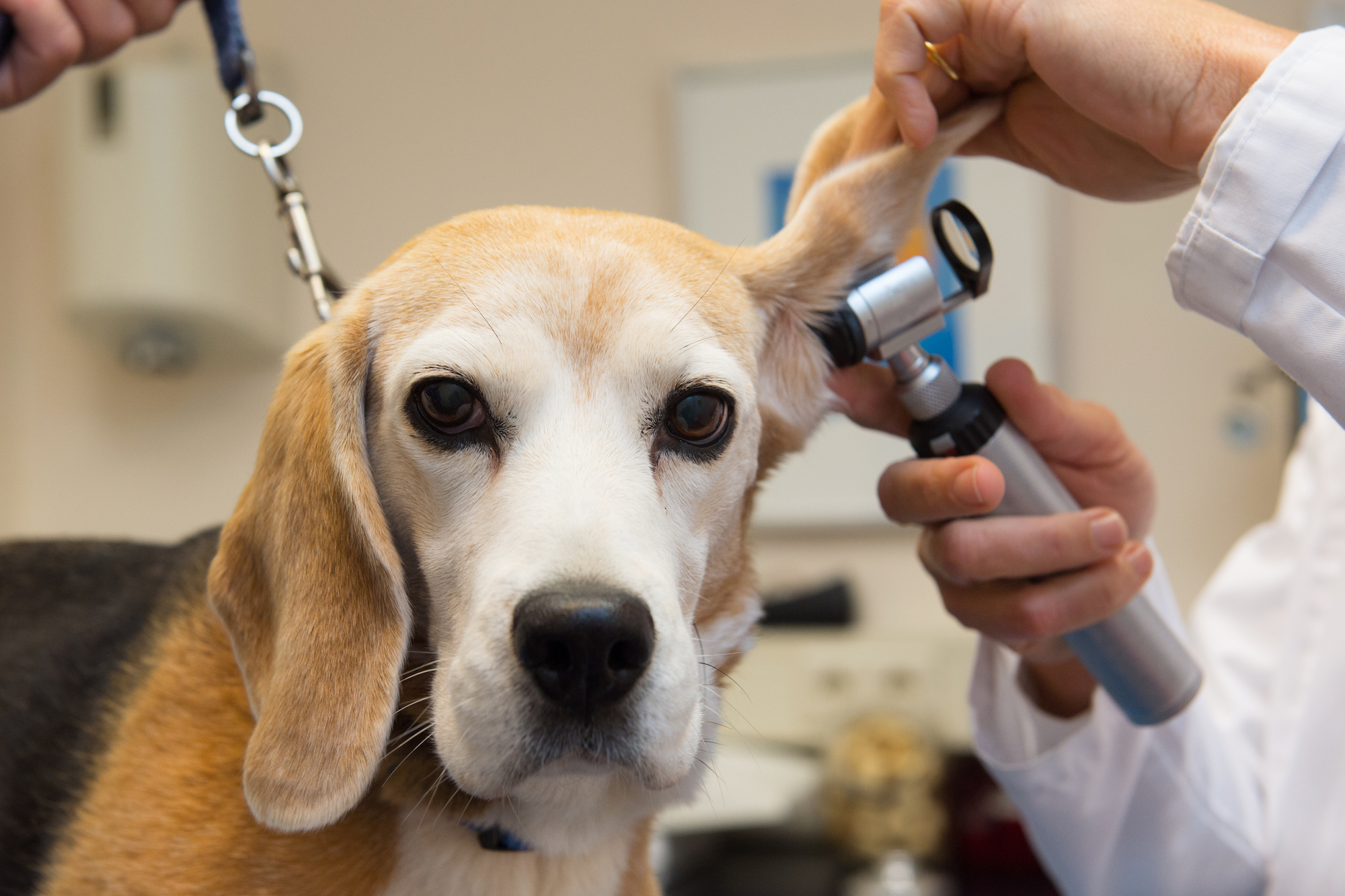It’s easy to look at someone who works with animals all day and think ,“lucky you!”
But when most of us look at veterinary professionals, what we miss is just how hard it is making a career, a business, and a life out of caring for animals—particularly people’s pets. The truth is, it’s an exceptionally challenging job, and the emotional, financial, and physical toll can be enormous.
The unseen side of an amazing job
Every vet professional practicing today chose this career out of love for, and a desire to help animals. And many will tell you just how rewarding that can be. Veterinarians and vet-team members DO get to work closely with animals, and use their hard-earned expertise to improve, and save, lives. In a 2020 study from Merck and the American Veterinary Medical Association (AVMA), most veterinarians reported high job satisfaction, agreeing with the statements, “I’m invested in my work and take pride in doing a good job,” and “my work makes a positive contribution to people’s lives.”
Yet this and other studies reveal the more challenging side of the job: 52% of veterinarians said they wouldn’t recommend a career in their chosen profession. And research also shows that the burdens of the job can have terrible consequences—the 2020 study found that veterinarians are more than 2.7 times more likely to attempt suicide than the general population.
The stresses of working as a veterinary professional arise from a kind of perfect storm of emotional and monetary factors including substantial debt from a long, expensive education, lack of work-life balance, dealing daily with the clients who are struggling to reconcile their own financial circumstances with their pet’s treatment, and the emotional weight of daily life-and-death decision-making (including euthanizing pets as a part of the job).
The overexposure of medical caregivers to the suffering of people or animals as they take on the burden of ill or dying patients can cause great emotional, physical, and spiritual distress and a reduced ability to be empathetic. It’s known as “compassion fatigue” and it’s a common, and serious, affliction among veterinary professionals.
A vet speaks out
In 2020, veterinarian Dr. Melanie Bowden articulated some of these challenges in a powerful TEDx talk, “What Being a Veterinarian Really Takes.” The video is barely underway when she reveals that she acquired $286,000 of debt during her education (and that was just for three years at a college of veterinary medicine—all told it took 10 years to become a practicing veterinarian).
Bowden goes on to describe a typical day featuring an overflowing schedule full of emergencies and patients begging to be squeezed in, and the emotional demands of dealing with pet owners who are distraught over their pet’s health, or unable to pay for the required treatment. As Dr. Bowden notes in the video, “There is nothing more soul-crushing in life than having the skills and ability to help something helpless and you can’t do it because someone can’t afford treatment.”
While the video is a call for empathy for veterinarians, Dr. Bowden’s most urgent message is one that many vets echo: The most helpful, important thing pet owners can do is partner with their veterinarian to be a proactive participant in the health of their pet.
Here, veterinarians, including Dr. Bowden, share with us some of the things you can do to be a responsible pet owner, the best partner in your pet’s care, and to help vets carry out their job effectively.
Exercise awareness—and empathy
As pet owners, our emotions are tied up with our animals; we often can’t see beyond our concern for them, so it’s easy to overlook the feelings of the person who’s treating them. And there’s no sugar-coating it—veterinary care is expensive, so when we get upsetting news about costs, we can sometimes aim our resentment, and our feelings of guilt and worry, at the person delivering the news, and the treatment.
Simply being aware of some of the realities of a veterinarian’s job, and the limitations of what they can and can’t do about the cost of treatment, may foster a better relationship between doctor and client. Most vets aren’t the business owner and aren’t in charge of the price of any given treatment; they are recommending what they think is best for the pet based on their training. As Dr. Bowden notes, no doctor who entered a profession to help animals wishes to see a treatment withheld based on money.
New York-based veterinarian Dr. Alex Schechter acknowledges that compassion fatigue is real, and one of the biggest issues vets face. When a vet walks in for your 1 p.m. new puppy appointment their morning could have involved the worst possible scenario for a dog and dog owner. “You have to hold a lot back,” he says. “I think that if owners understand what a typical day looks like and that vets are doing their best, it would make a difference.”
What you can do: Watch Dr. Bowden’s TEDx talk—she and other vets have brought awareness to the issue of wellness in the profession. You can also visit the site of professional communities like Not One More Vet, a group offering resources and support to veterinarians feeling overwhelmed by the financial and emotional burden of the job.
Develop a relationship with a vet you trust
One of the most important things pet owners can do is simply establishing a good relationship with their vet, says Dr. Schechter. “You should trust that your vet is a friend in recommending the right things,” he says. “If you don’t for whatever reason, find someone else because you need to have that trusting relationship for the life of the pet.”
Dr. Bowden says she uses the word partnership “because it is a two way relationship,” she says. “Veterinarians need to step up and be respectful of their clients, even when they have different views of the human animal bond, and create a safe environment that builds trust. Clients need to be open and honest with their veterinarians about their concerns and open-minded to our responses to their questions.”
What you can do: If you don’t feel comfortable with the advice or service your vet is offering, consult your social network, neighborhood pet owners, your local rescue organization, online reviews (being careful to focus on substantive feedback), trainers or other sources to find another option that fits your needs.
Be a responsible pet owner
Pets aren’t just a financial and emotional responsibility; they’re a significant time commitment. Dogs need ongoing training, socialization, and exercise, and a lack of those things can be the source of problems that land them at the vet. “This is a huge factor,” says Dr. Bowden, noting that too often people choose a pet on impulse or based on the way they look, not realizing the health needs, activity levels, and personality of the breed. “Pets become labeled as ‘bad’ animals for doing normal behaviors for the species or the breed,” she says.
What you can do: Don’t buy pets as gifts for other people. Before choosing a pet, consider your lifestyle and available time and financial resources, and make a plan for day-to-day care, including walks (you can also check out our breed and training guides!).

Be a proactive partner in your pet’s care
Dr. Bowden and other vets put special emphasis on this point: stay on top of your dog’s health, so you can prevent problems, or treat them before they’re crises. Partnering to be a proactive participant in your pet’s health means coming in for annual exams, as well as following your veterinarian’s recommendations for preventative care, says Dr. Bowden. This includes everyday treatments like vaccines, fecal testing and heartworm and flea/tick medications, she notes, but it also includes things like dental cleanings and senior blood work screening. “It is easier to prevent a health problem or fix it before your pet is symptomatic than to restore health after a pet has become unhealthy,” she says. “Most pets still die of chronic or preventative diseases that if caught earlier in their life could have extended length and quality of life by years.”
What you can do: Whether your pet is healthy or sick, see your vet every single year for an exam and take a serious approach to preventative steps, like dental care. Another big step: maintain a healthy weight for your dog! This is one of the most accessible things you can do to prevent serious health problems in the long run.
Get pet health insurance or start a pet health fund
Remember that the hospital you’re dealing with is likely a small business doing its best to serve as many pets as it can, not a bank. This means that they traditionally cannot afford to not be paid when services or rendered, give long payment periods, or set up payment plans with you themselves. So, it’s every dog owner’s responsibility to pay the bill at the time it is due.
“My number one recommendation to owners is to get pet insurance, ideally as soon as possible before any pre-existing conditions arise,” says veterinarian Dr. Danielle Woolf. The vets we spoke to were in unanimous agreement on this point. When pets get sick, many owners are not prepared for the cost—routine veterinary care can cost from $700 to $2,000 annually, and that doesn’t include meds or emergency visits (which can average $800-$1500). This can lead to resentment between vet and client, which is stressful for all parties, but it can also lead to animals not getting the care they need. Policies range in price, and can cover most veterinary expenses including wellness visits, emergencies, surgeries and prescriptions.
If pet insurance isn’t an option, Dr. Woolf recommends that owners have a savings account for their pets’ health. “Ultimately, having a financial plan established for a pet allows veterinarians to deliver appropriate medical care and while allowing for a better working relationship between the owner and veterinarian,” she says.
What you can do: Read reviews of the best pet insurance options for your dog, and ask your pet-owning friends for recommendations, or, if you can, sock away even a small amount each month for inevitable veterinary costs.
In sum, when dealing with your pet’s health care provider, a bit of empathy and preventative action can make for happier vets, and pets. Challenges aside, many vets would agree with Dr. Schechter when he says he couldn’t imagine doing any other job. “I have wanted to be a vet since I was three. I followed my dream and it has been more challenging than I expected and there are days when I think I should have done something else less stressful,” he says. “But when you talk to anyone and you tell them you’re a vet their eyes light up and they tell you about their dog and you see how special pets are to people, and you realize that’s why you’re doing it.”
If you’re a veterinary professional, learn more about The Farmers Dog in our vet pro portal.










